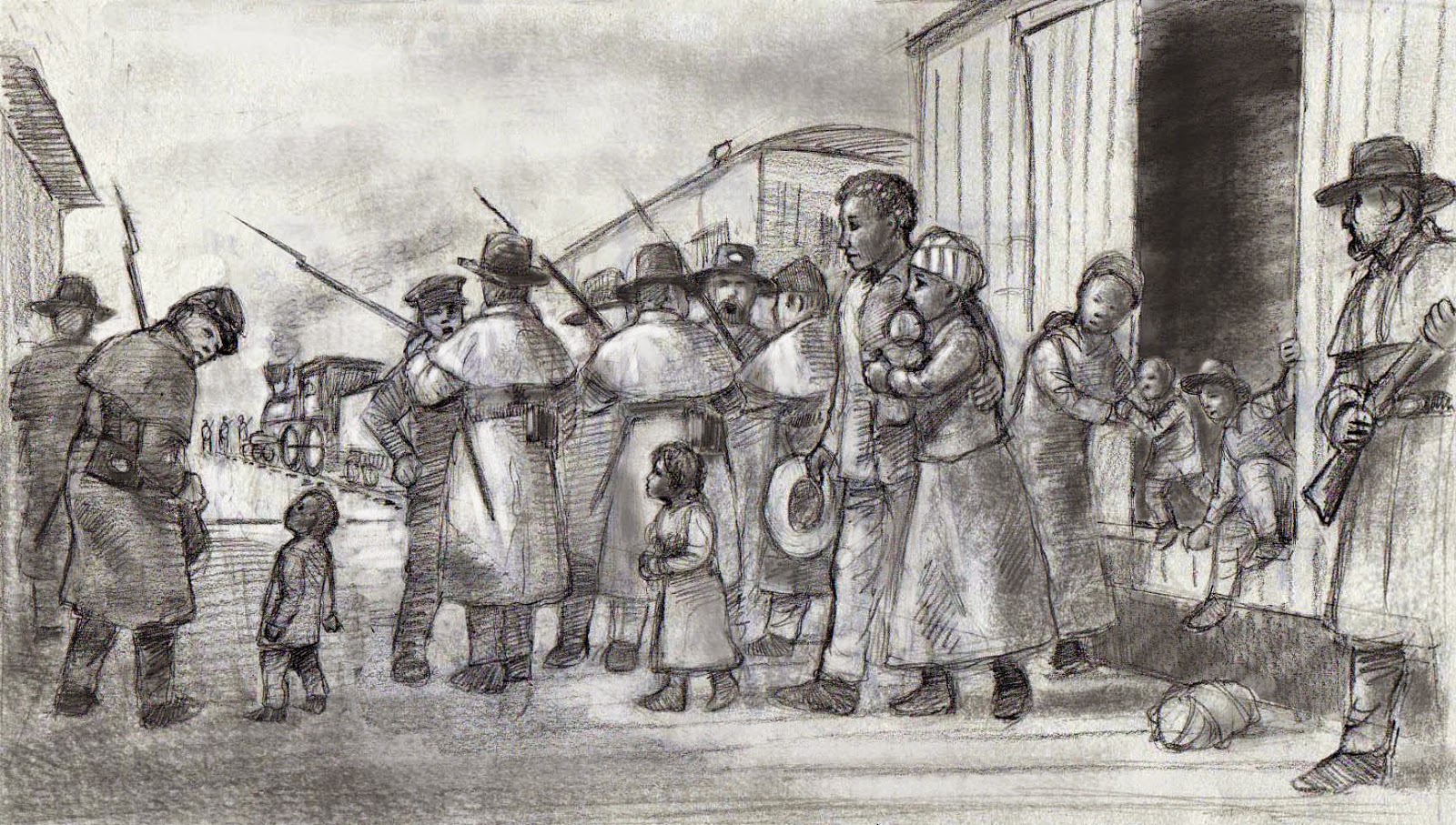I must apologize for the long spell between posts, but my
life is like that. For days, weeks . . . months . . . I throw myself into certain endeavors with great
enthusiasm, and then lose steam for a while. After my break, I think I am back for a decent run.
Over the last year, in addition to illustrating three new
books, I also worked on a painting of an American Civil War subject I have
previously never dealt with – the liberation of slaves. This is not my first time painting
slaves; see my earlier post on Dred and Harriet Scott by clicking here.
The Minnesota Historical Society asked me to create an
illustration for their 5-minute film "Perils and Prison Camps: Beyond the Battlefield". Prior to their capture and deadly confinement in the Confederate prison camp near Andersonville, Georgia, several men of the 9th Minnesota Volunteer Infantry
Regiment were involved in what was known as the “Otterville Outrage”.
The story was told in impressive detail by John B. Lundstrom
in his book, “One Drop in a Sea of Blue”, published by Minnesota Historical Society
Press. Click here for details.
On a November morning in 1863, while guarding a railroad
bridge near Otterville, Missouri, these Minnesota soldiers were approached by
John, a run-away slave. John pleaded with the men to stop a train and rescue
his family before they could be shipped to Kentucky and sold. The situation was complicated. Missouri
was a border state – loyal slave owners, in spite of the Emancipation
Proclamation, could keep their human “property”, but were not allowed to ship
slaves to another state.
When the junior officer in charge conveniently stepped away,
38 men grabbed their weapons and fell in under the command of a sergeant who
promptly marched them off to the nearby Otterville train station. The train was
stopped and the slaves were removed from a boxcar, under protest from the
conductor and a pair of Missouri militia officers – the slave’s master remained
inside the passenger car, no doubt intimidated by the Minnesotan’s leveled
rifle-muskets. The train moved on, and the slaves joined the detachment as they
started to march back to camp. Moments later, the train returned, this time
with the Minnesotan’s commanding officer on board. The slaves ran into the
woods, and the Liberators were placed under arrest.
The story has an ambiguous ending. Historians are not sure
of the fate of the liberated slaves. The Minnesotans promised to help them, but
they were jailed for some time until the political firestorm they had created
finally blew over. By then, the slaves had disappeared . . .
Preliminary compositional sketches
I decided to paint a scene that would work in wide-screen
format for the documentary and have several vignettes that could be focused on
if the director and editor wished to do so.
To create this painting, I used a variety of approaches to
visualize the characters as well as the train.
Most figures were based on photos of my wife and myself posing
in the studio. However, in a few instances, I actually used DAZStudio software
to test out some poses and replace the occasional face. The fact that it allows
me to introduce facial and body-type variations, as well as control the
lighting, has made my life much easier. I this case, my schedule required that I move quickly forward and arranging suitable African-American models was not a realistic option. At the end of the day, I will use whatever means are at my disposal to
visualize the scene, knowing full well that the process of painting it will –
and should – change the picture in ways I cannot always foresee.
We did not have references for the slave’s appearance, other
than suggestions that John was a big man. I found an online photo of a
beautifully painted portrait (by one of my favorites, George Caleb Bingham) of
Missouri State Militia Major Levi Pritchard. He is one of the two Union
officers arguing with the Liberators.
Major Pritchard
While there are photos of various Liberators, I opted to
take a chance and concentrate more on the other characters. It seemed to me
that the overall composition and narrative was better served by not turning
this into a “Where’s Waldo” type of history painting.
The train was based on various period photos and some great
shots of recently fabricated, top-notch HO scale model railroad box cars
intended for train and Civil War enthusiasts.
The ten year old in me still loves model trains . . .
The project progressed and the painting (can we say
“Alliteration” folks?) was built up in the usual stages:
1. Read period accounts
2. Sketches
3. References
4. Comprehensive photo-sketch
5. Transfer to the masonite “Gessobord” (I really dislike
cute names like that, but love the actual “bord”, so . . .)
6. Careful underpainting of lines and value masses.
7. Layers of corrections until the deadline or my dear wife
says time is up.
I can honestly say that this project was a pleasure to work on, and as far as I know, nobody has painted this scene before. While the images of the painting are only a small part of the finished documentary, they stand out and highlight an important moment in our history.
If you get a chance, check out this and the other documentaries in the series by clicking here.
Cheers, for now!











No comments:
Post a Comment